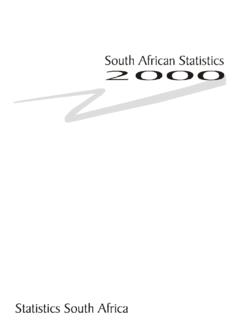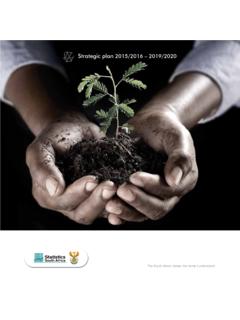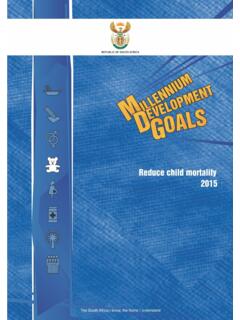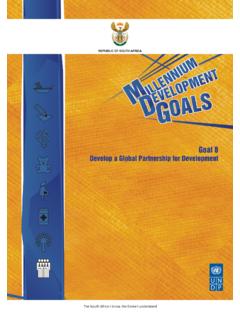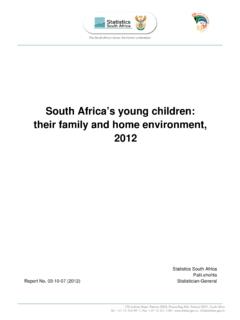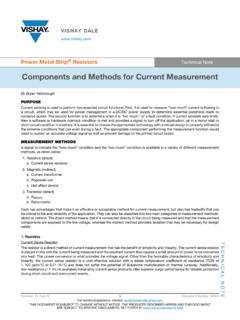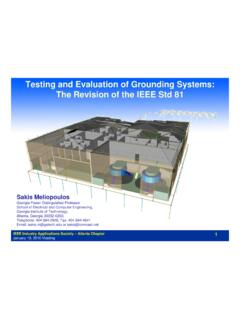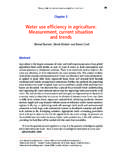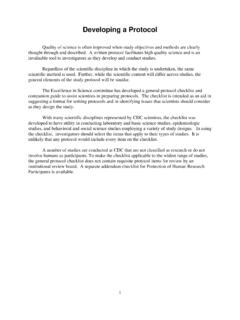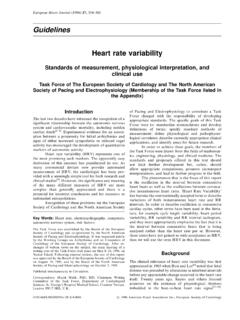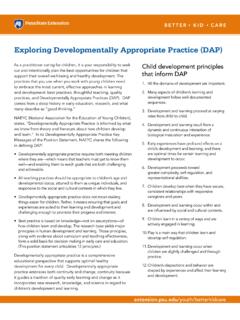Transcription of Expenditure on Gross Domestic Product: Sources and …
1 Expenditure on Gross Domestic product : Sources and methods Expenditure on Gross Domestic product : Sources and methods Enquiries National Accounts division - 012 310 2951 Statistics South Africa 2 Expenditure on Gross Domestic product : Sources and methods Table of Contents 1. Introduction .. 3 2. Source data.
2 4 3. Components of Expenditure -based GDP .. 6 Household final consumption Expenditure (HFCE) .. 6 Government Final Consumption Expenditure (GFCE) .. 26 Gross fixed capital formation (GFCF) .. 40 Changes in inventories .. 65 Rest of the world - Trade .. 71 4. Benchmarking .. 77 5. Seasonal Adjustment .. 77 6. APPENDIXES .. 79 7. Appendix 5: South Africa s system of trade and balance of payments adjustments .. 88 8. Key reference materials and guides .. 90 Statistics South Africa 3 Expenditure on Gross Domestic product : Sources and methods 1.
3 Introduction Statistics South Africa (Stats SA) is the official producer of social, economic and environmental statistics, as prescribed by the Statistics Act of 1999. This document serves as general information to the public on how the Expenditure -based Gross Domestic product (GDP) is compiled by Stats SA. The Sources and methods described herein apply to the period 2010 to date. Previous estimates of GDP (E) were compiled by the South African Reserve Bank (SARB), using different quarterly and annual Sources and methods .
4 With relevant regulatory authority, there are a number of cases where source data are published by other public sector entities; and by agencies in the public or private sector, in cases where no official statistics are available. Although the Expenditure on Gross Domestic product described in this document is an official statistic, the official estimate of GDP is derived from the production approach. These two estimates are not exactly the same, and the difference is known as the statistical discrepancy in the GDP.
5 This applies to GDP in both nominal terms (current prices) and real terms (constant prices). For detailed information on how the published estimates are put together, users are requested to contact Stats SA s National Accounts division on (012) 310 2951. As both Sources and methods are bound to change over time in the light of progress in the availability of basic data, this document will be updated from time to time as required by improvements in the way GDP is estimated. Statistics South Africa 4 Expenditure on Gross Domestic product : Sources and methods 2.
6 Source data National accounting estimates are very seldom the result of direct measurement . Some data are derived from statistical inquiries, as is the case with sample surveys and censuses of business activity. Other basic information is derived from the administration of taxes and duties by the South African Revenue Service (SARS). For example, information derived from excise taxes is used to estimate the annual Expenditure of households on alcoholic beverages and tobacco. The use of official source data is preferred due to a number of compelling reasons, even when there are competing data produced by other Sources : the methods involved are subject to public scrutiny, they are conceptually comparable to similar data available in other countries, and there are generally accepted processes to certify them as fit for purpose.
7 However, where official data are available late, or are not available with the desired frequency, do not have the right coverage, or where concepts are at odds with what is specifically demanded for compatibility with the national accounting framework, various adjustments have to be made. The various cases are discussed below: Source data available late. The results of the Quarterly Financial Statistics (QFS) survey1, used in the estimation of certain indicators of Gross fixed capital formation (GFCF), changes in inventories, and household final consumption Expenditure (HFCE), are available too late for inclusion in the quarterly estimates to which they refer.
8 Accordingly, the first GDP (E) estimates reflect preliminary QFS data and are revised in the following quarter when the final results become available. While the current practice is to assume that late data behave the same way as data submitted earlier in the quarterly cycle, a close monitoring of revisions serves to test whether this belief is warranted. 1 The QFS is a quarterly sample survey which collects a range of financial statistics in respect of enterprises in the formal business sector of the South African economy, excluding agriculture, hunting, forestry and fishing and financial intermediation and insurance and government institutions.
9 Statistics South Africa 5 Expenditure on Gross Domestic product : Sources and methods Compatible concept but insufficient frequency: The Income and Expenditure Survey (IES) is a household-based survey conducted by Stats SA. It captures information on household consumption Expenditure patterns using a combination of diary-entry and recall methods on the part of the respondent. Results from the IES would be suited for HFCE compilation; although the survey is subject to incomplete coverage and response bias.
10 However, the IES is only conducted every four to five years. Because of the lengthy interval between surveys, the IES is only employed as a comparison source for annual HFCE estimates. Incompatible concepts: Value added tax (VAT) is excluded in the source data for motor trades. As HFCE is measured VAT inclusive, VAT is added onto the source data for motor vehicles to estimate household consumption Expenditure on motor vehicles. Unavailability of source data. Certain components of HFCE are only available annually.
